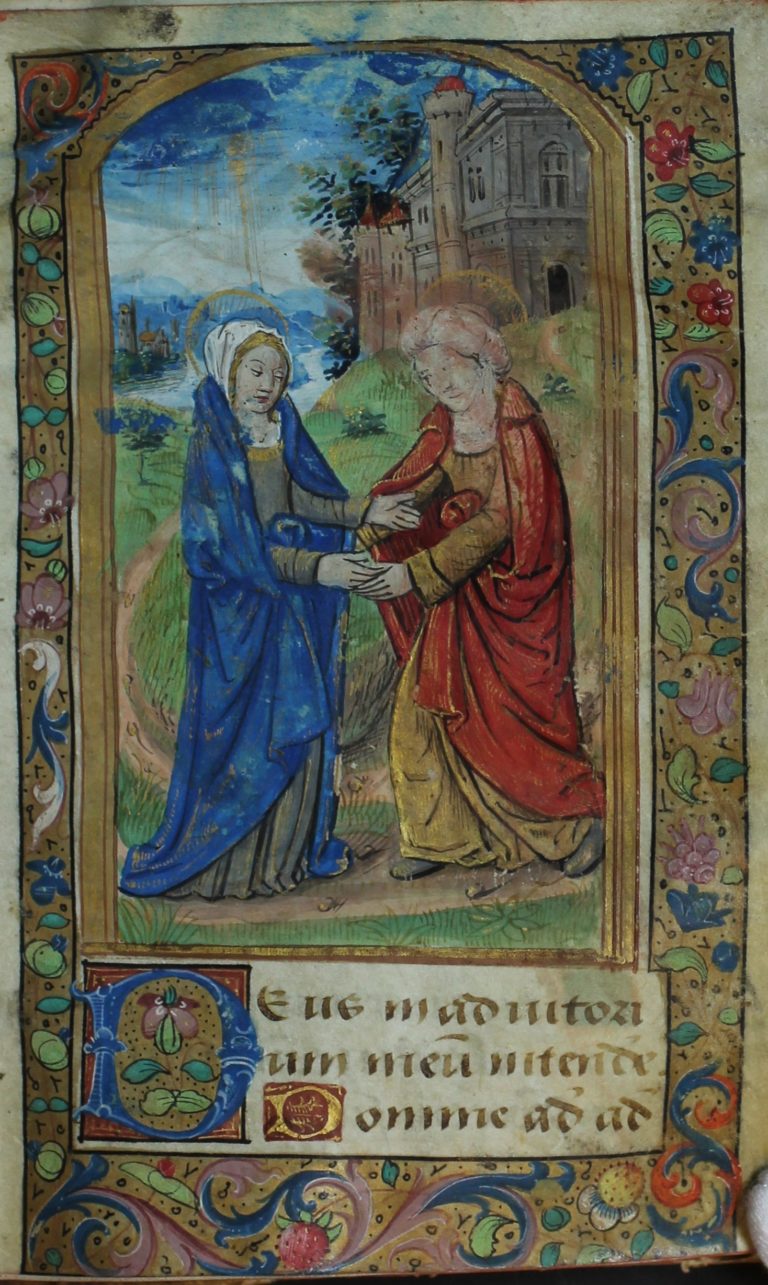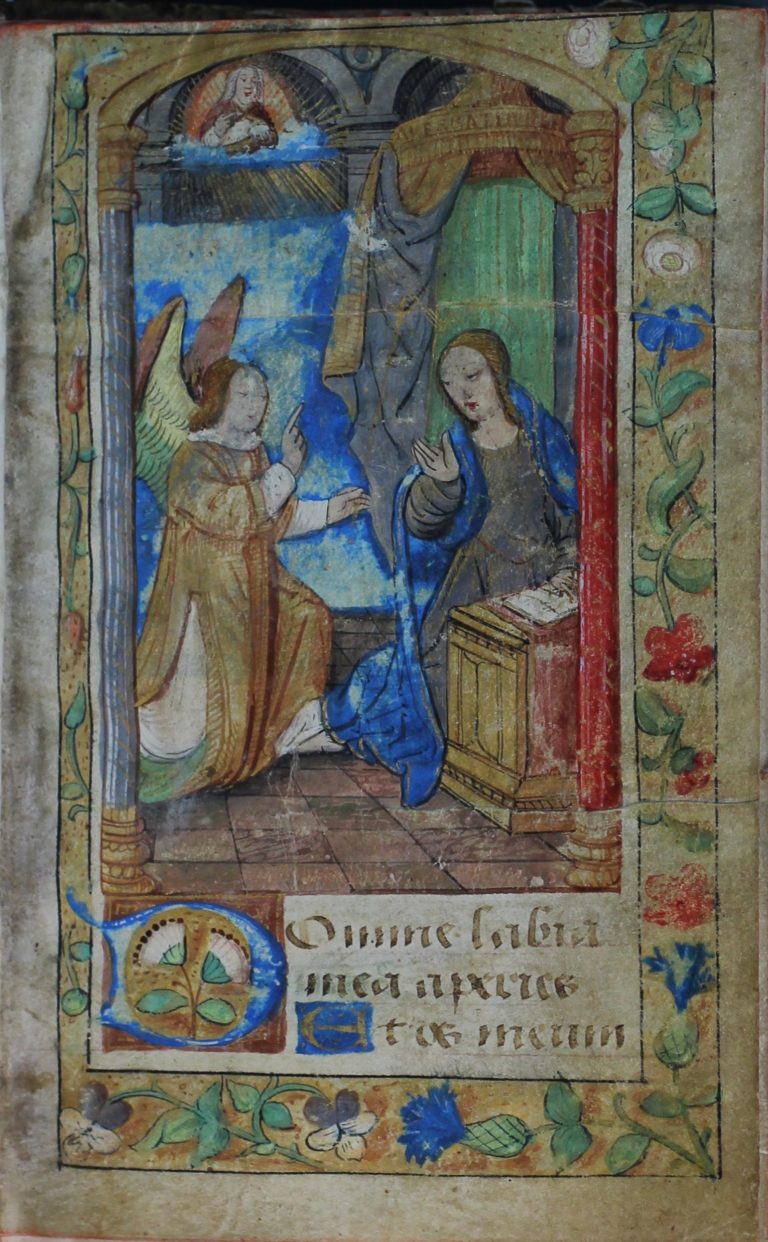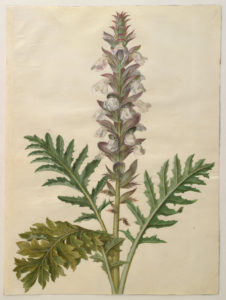Illuminations
Illuminations, which are illustrations decorated with gold and sometimes silver, can be found in Books of Hours. [1] Typically, an illumination can be found at the beginning of an hour, but it can also be found in other portions of the book. One such place is the calendar, which this Book of Hours does not have. The calendar is found at the front of the book and denotes information such as the saints’ days and special feasts. [2] These illuminations are usually made to show what is happening during the calendar year.



The Hours
A Book of Hours is comprised of eight hours. These Hours are referred to as Matins, Lauds, Prime, Terce, Sext, Nones, Vespers, and Compline. Matins and Lauds were usually prayed together, so they are sometimes thought of as one Hour. [3] It is usual for the beginning of each Hour to be illustrated with scenes from the events of Mary’s life surrounding the birth and infancy of Christ. [4] This particular Book of Hours only has three illuminations, which means that the manuscript is missing five illuminations.
Within the borders of two of the illuminations, acanthus, a flowering plant can be seen. Floral borders were common in illuminations, but is not the only type of border decoration. The acanthus can be seen in two illuminations belonging to this particular Book of Hours along the border design. The two illuminations are The Adoration of the Magi and The Visitation. In The Adoration of the Magi, the acanthus can be seen at the bottom and the sides of the border in blue and orange, as well as in blue and champagne. In The Visitation, the acanthus can be seen at the bottom and on the sides in the same colors. Often the plant is shown multicolored with blue and another color which is then interspersed with other flowering foliage. [5]

The Schedule
The creation of a Book of Hours was for a layperson, a non-ordained member of the church. This allowed for men and women to participate in worship similar to that of priests and monks. A Book of Hours is referred to as such as it references the hours that monks would gather to pray. The table below shows a comparison between the observation of these times between a monk and a layperson. While monks observed their prayers at the appropriate time, it was not the same case with the laypeople. Their observational times could vary day to day following a more relaxed schedule. [6]
| The Hours | Monk's Time to Pray | A Layperson's Time to Pray |
|---|---|---|
| Matins | About 2 a.m. | Around 6 a.m. |
| Lauds | Following Matins; about 2 a.m. | Following Matins |
| Prime | Around 6 a.m. | Following Lauds |
| Terce | 9 a.m. | Before Suppertime |
| Sext | Noon | Before Suppertime |
| None | 3 p.m. | Before Suppertime |
| Vespers | Start of Evening | Before Suppertime |
| Compline | Said before Close of Day | Before Suppertime |
Footnotes
[1] John Harthan, An Introduction to Illuminated Manuscripts (London: Her Majesty’s Stationery Office, 1983), 6.
[2] Christopher De Hamel, “Books for Everybody,” in A History of Illuminated Manuscripts (Boston: David R. Godine Publisher Inc., 1986), 160.
[3] Roger Wieck, Time Sanctified: The Book of Hours in Medieval Art and Life (New York: George Braziller Inc., 1988), 28.
[4] Edith Rothe, Mediaeval Book Illumination in Europe (London: Thames and Hudson, 1968), 199.
[5] Rowan Watson, Illuminated Manuscripts and Their Makers (London: V & A Publications, 2004), 34.
[6] Raymond Clemens and Timothy Graham, Introduction to Manuscript Studies (Ithaca: Cornell University Press, 2007), 208.